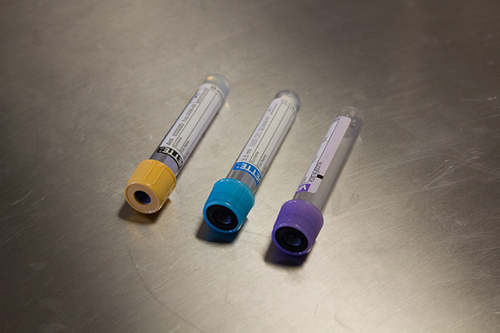
Blood bottles. The yellow top bottle is for biochemical tests, blue for coagulation and purple for haematological tests (full blood count).
Recent investigations are often useful to guide diagnosis and response to treatment. These usually are either laboratory results or radiological results.
Look at all available blood results and look at the trends.
Common investigations include (these may vary according to the laboratory):

Blood bottles. The yellow top bottle is for biochemical tests, blue for coagulation and purple for haematological tests (full blood count).
Look at all recent imaging. This will give you information on the patients past medical history and any recent problems. Consider what further imaging may be necessary to aid your management of this patient.
If you have an electronic records system you may be able to see previous emergency department attendances, clinic letters, discharge summaries and so on to provide background information.